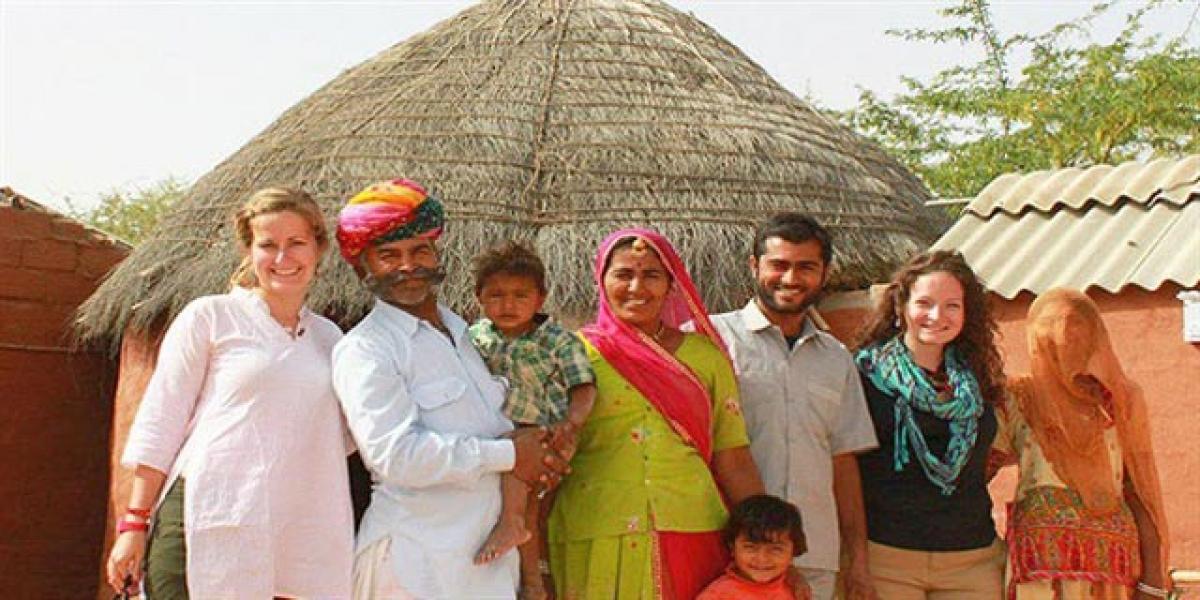Just In

Tourism is a vital sector for economic development of the country as it provides employment opportunities, both directly and indirectly.
Tourism has remained confined to middle income groups and the richer sections of society apart from foreign tourists. Therefore, there is need to change our tourism policy so that students and youth, in particular, can move round the country and see its treasures to gain first-hand knowledge
Tourism is a vital sector for economic development of the country as it provides employment opportunities, both directly and indirectly. Notably, from misty Himalayan hamlets in various States and the sunny north Indian countryside to Gujarat and Rajasthan’s arty heritage places alongside further south to Kerala’s backwaters and Tamil Nadu’s famed temples and religious centres, the country offers varied places of interest to a yearning traveller.
Far from the madding crowd
- India receives only 0.68% of global tourist traffic
- Global travellers estimated to touch 1.5 billion by 2020
- Need for more 2.5 million hotel rooms to eye even 1% of tourists
- Promote rural livelihoods through community tourism
- Foreign tourists not averse to homestay facilities
Yet tourism has not taken off, why? The obvious reason is the lack of infrastructural facilities, notwithstanding there has been significant improvement in the last few years. Undeniably, much remains to be accomplished, especially if more foreign tourists from the West and neighbouring countries have to be attracted to come and see Incredible India in a bigger way.
In fact, a basic point which needs to be highlighted is that tourism is a source of knowledge and all sections of the population have to be provided the opportunity. Yet seeing the sights is a costly exercise as hotel and lodges rates are beyond the common man’s reach. Scandalously, even government hotels and lodges are too costly and beyond the reach of the middle income sections. Add to this, there is no rule to charge subsidised rates for low income groups or schools and colleges students who come to stay in government accommodation.
Consequently, tourism has remained confined to middle income groups and the richer sections of society apart from foreign tourists. Therefore, there is need to change our tourism policy so that students and youth, in particular, can move round the country and see its treasures to gain first-hand knowledge. Especially against the backdrop that tourism is an educational exercise whereby the opportunity to avail this should be made available to all.
As it stands, the country has over 2.2 million hotel rooms, most of these in shabby roadside conditions, to cater to 7.8 million foreign and domestic tourists. Notably, according to the Tourism Ministry, India will need an additional 2.5 million hotel rooms, spanning small hotels to five-star facilities to meet the demand of say even one per cent of global travellers, estimated to touch 1.5 billion by the year 2020.
Meanwhile only around 3000 new hotel rooms are being added every year due to land and financial issues. Thus, while hotels have been increasing their rates at quite a fast pace, especially in busy tourist centres, homestay, a relatively new concept, has picked up appreciably recently. Interestingly, foreign tourists are not averse to homestay facilities, especially in remote areas and in mountainous regions of the country.
Facilities provided by these include a clean room with toilet, sometimes attached, good food according to the tourist’s choice. Also, the homestay owners look after the foreigners as if they are part of their family. Additionally, to increase tourist inflow the government has recently relaxed stringent licensing norms and recommended reduced levies on homestay establishments registered under the bed-and-breakfast scheme to give a boost to the industry.
Further, a set of guidelines has been notified by the Union Tourism Ministry too encourage more households to offer accommodation to tourists and help make up the estimated shortfall of over two lakh hotel rooms. Besides, as tourism is a concurrent subject, the Ministry has asked States to provide land at cheap rates to promote the construction of small hotels and bed-and-breakfast outlets. They have also been asked to publicise homestay facilities in a big way, emphasizing how they may, in some ways, be better than conventional stays in big hotels.
Shockingly, India now receives only 0.68 per cent of the global tourist traffic while Singapore, a dot in the world map, has a tourist share of around 0.9 per cent and China 6 per cent. Hence, there is an imperative need to attract foreign tourists in a big way. In this connection, hospitality in homestays would be attractive to the young generation of global travellers, whose basic objective of travel is to get first-hand knowledge of India’s history and culture, come closer to nature and understand religious attitudes and beliefs.
Pertinently, a recent study by the Tourism Ministry revealed foreigners and domestic tourists nowadays prefer homestays over standard hotel accommodation to experience the local way of life and cuisine at affordable rates. See how in countries like Thailand, Vietnam and Cambodia tourism has picked up in one year thanks to homestays which have emerged as a major attraction for travellers who always want something new and different.
Towards that end, various agencies are promoting rural livelihoods through community tourism in villages, specially in Kerala and Himachal Pradesh, which have known for there scenic beauty and greenery. These ‘far from the madding crowd’ programmes give tourists what they want: Being close to nature and enjoying walks and treks in unspoilt village environments.
By Dhurjati Mukherjee

© 2025 Hyderabad Media House Limited/The Hans India. All rights reserved. Powered by hocalwire.com







